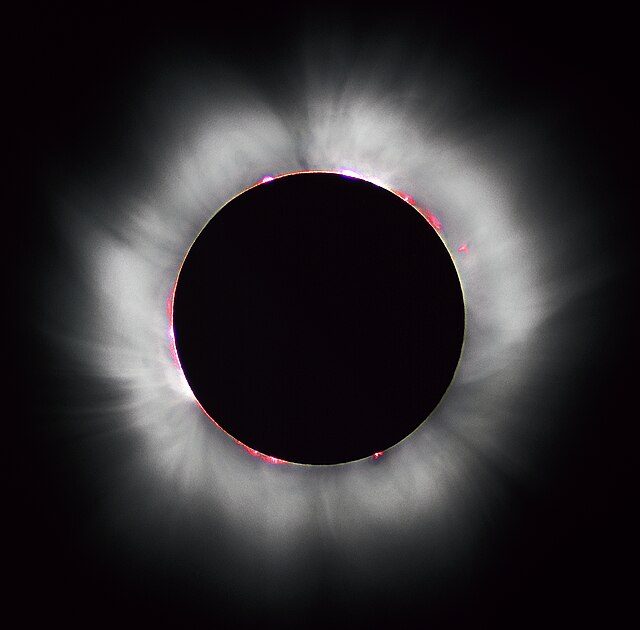An eclipse season is a period, roughly every six months, when eclipses occur. Eclipse seasons are the result of the axial parallelism of the Moon's orbital plane, just as Earth's weather seasons are the result of the axial parallelism of Earth's tilted axis as it orbits around the Sun. During the season, the "lunar nodes" – the line where the Moon's orbital plane intersects with the Earth's orbital plane – align with the Sun and Earth, such that a solar eclipse is formed during the new moon phase and a lunar eclipse is formed during the full moon phase.
James Ferguson's 1757 comparison of a lunar or solar eclipse with a full or new moon, showing how the nodal precession of the moon's 5° orbital inclination means eclipses happen only about every six months rather than every two weeks
An eclipse is an astronomical event which occurs when an astronomical object or spacecraft is temporarily obscured, by passing into the shadow of another body or by having another body pass between it and the viewer. This alignment of three celestial objects is known as a syzygy. An eclipse is the result of either an occultation or a transit. A "deep eclipse" is when a small astronomical object is behind a bigger one.
Totality during the 1999 solar eclipse. Solar prominences can be seen along the limb (in red) as well as extensive coronal filaments.
The shadow of an eclipse on Earth as seen from space
The progression of a solar eclipse on August 1, 2008, viewed from Novosibirsk, Russia. The time between shots is three minutes.
This print shows Parisians watching the solar eclipse of July 28, 1851





